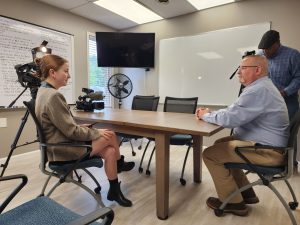
Solid Blend’s Environmental Building Assessments Dayton 24/7 Now
After 30+ students at Kettering Fairmont HS, the Solid Blend team tested, and remediated the school’s water systems.

COVID-19 means new risks to water safety. Whether your organization has continued with uninterrupted daily operations, or you’ve had to adjust to building shutdowns or delayed construction, your water safety needs to be a top priority during COVID-19 and as we recover.

Time to Re-open?
If you’re bringing an entire building or part of your building back on-line after a shutdown for any reason – including the pandemic – you need to know the risk for Legionella and other waterborne pathogens is higher because the water in your lines has been stagnant for days, weeks, or even months.
Keeping You Safe
When performing on-site CDC environmental assessments, we protect our customers by monitoring the health of our staff, and our technicians wear proper PPE and masks when out in the field.
Is Your Facility at Higher Risk?
Some buildings face higher risk for Legionella and other waterborne pathogens during a shutdown. Is yours one of them?
Medical | Commercial | Educational | Cultural | Hospitality | Manufacturing
“We’re here to help you safeguard your building’s water from pathogens, whether it’s currently vacant or seeing minimal use, so you can be confident in welcoming back employees and customers.” — Lois Elrich, President, Solid Blend

We offer a full menu of services to help you manage your water systems or bring them back online safely. Our team is ready to support you if you are experiencing staffing concerns. We can increase our service frequency to help safeguard the water in your facility to ensure your treatment is under proper control.